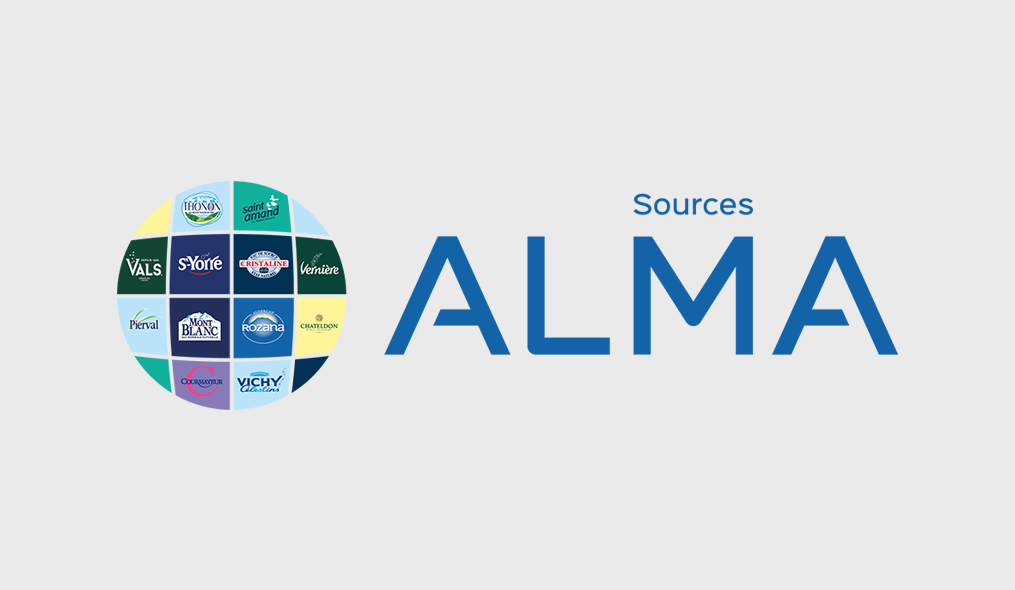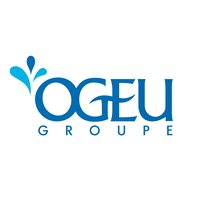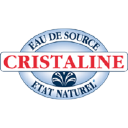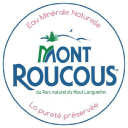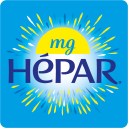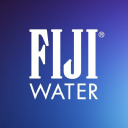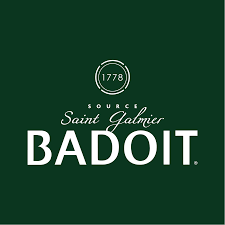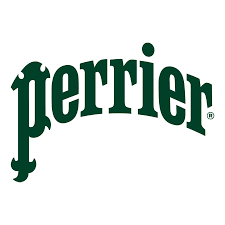Summary
The global bottled water market exhibited significant growth, with a forecasted CAGR of 7.4% between 2022 and 2027, reaching a value of $349 billion. In France, despite market maturity, there was a 3.5% increase in bottled water sales, reaching €2.5 billion in a rolling year-to-date. French consumption patterns show a strong preference for still water, with Cristaline being the most popular brand. A rise in flavored water sales, particularly carbonated varieties, reflects a shift from sodas towards healthier options. The French market is also becoming increasingly eco-conscious, pushing for innovations in bottle recycling. The industry saw a slight increase in the number of companies to 225 and the value chain starts from water collection to distribution in various outlets.
The market is dominated by large groups like Danone, Nestlé, and Alma, with Danone generating €25.3 billion in sales revenue. The French trade balance for bottled waters is greatly positive, and there is competitiveness between bottled and tap water on economic and ecological grounds. Innovations are emerging to make bottles more eco-friendly, as evidenced by Vittel's launch of a 100% recycled PET bottle.
Trends and Dynamics in the Bottled Water Market in France
In the French bottled water market, consumer preferences and industry dynamics are evolving, characterized by growth, environmental consciousness, and innovation. French consumers are increasingly drawn towards still water over carbonated options, with a vast majority choosing still water for hydration purposes.
A notable shift towards healthier choices propels the expansion of the flavored water segment, which is seeing a surge in both value and volume, suggesting an inclination to replace sugary sodas with these alternatives. Sales of bottled water in France have continued to rise steadily, with recent figures indicating a value increase to between €2.4 and €2.6 billion. The market, mature yet growing, shows a compound annual growth rate (CAGR) hovering around 1.5% for France.
However, one cannot overlook the significant impact of external factors such as climate change, socioeconomic statuses, the aging population, and water's health benefits on this growth pattern. The French bottled water consumer persists in preferring brands such as Cristaline over others, making it the market leader. Although flavored water is still a smaller market segment when compared to plain water, it exhibits robust growth figures of around 14% to 15%.
This consumer move towards more diverse and healthy beverage options is shaping market offerings. The French market's sensitivity to environmental concerns is also increasingly evident. Initiatives to make packaging more eco-friendly are gaining traction as consumer recycling habits improve. Brands are introducing bottles containing higher percentages of recycled plastic, and legislative movements, such as the disposals targeting sales promotions and plastic usage in specific market segments, are influencing plastic bottle production and sales strategies.
France's bottled water trade balance stands robustly in surplus, with exports exceeding imports substantially, leading to a coverage rate between 145% and 150% in recent years. The country is a formidable player in the global bottled water export scene, showcasing its substantial capacity for production and international market presence.
Domestically, tap water presents itself as a formidable competitor to bottled water. The affordability of tap water, being up to 300 times cheaper, and its negligible ecological footprint compared to bottled water, remain strong advantages. Bottled water manufacturers are responding by finding innovative ways to reduce the environmental impact of their products and packaging, such as by pioneering bottles made of completely recycled materials.
In conclusion, the French bottled water market is characterized by growth stemming from consumer trends towards healthier, more environmentally conscious beverage options. The industry also faces strong demand for still and flavored waters, and an expanding export capacity.
Leading Bottled Water Brands Quenching the French Market
Danone Eaux France: As one of the major players in the French bottled water market, Danone Eaux France is the subsidiary responsible for handling the water division of the multinational food-products corporation. The company is known for numerous popular water brands, such as Evian and Volvic — both widely recognized for their natural mineral content and marketed for their health benefits. Evian's unique origin from the French Alps and Volvic's volcanic filtration system have been key selling points that resonate with health-conscious consumers.
Nestlé Waters France: Another industry giant, Nestlé Waters France, operates under the global umbrella of Nestlé — a household name in the food and beverage sector. The company boasts a portfolio of well-known bottled water brands, including Perrier and Vittel. Perrier's naturally carbonated mineral water, sourced from the south of France, has become synonymous with elegance and sophistication, while Vittel is appreciated for its mineral-rich content beneficial for active lifestyles.
Neptune (Alma Group): Neptune from the Alma Group is a significant force in the French market, thanks mainly to its Cristaline brand. Cristaline has managed to secure a dominant position, becoming the go-to bottled water brand for many French consumers due to its affordability and widespread availability. Its market leadership can be attributed to its value proposition of offering good quality water at a price point that's accessible to a broad demographic.
Ogeu: Carving out a space for itself as a specialized entity in the market, Ogeu caters to a segment of the market that values the authenticity and regional heritage of its products. As a company with roots dating back to the 19th century, Ogeu positions its offerings as premium yet rooted in local tradition, drawing from the Pyrenees mountains to provide natural mineral waters with distinct taste and mineral composition.
Water of Treignac: Treignac water is a smaller but notable player, renowned for its purity and composition, sourced from the heart of Corrèze. Although not as large as its rivals in terms of market share, Treignac water has carved out a niche by emphasizing the pristine natural environment of its source and offering a pure hydration experience to those who prize unblemished natural purity in their choice of bottled water.
Each of these companies holds a specific position within the French market, depending on factors like their brand heritage, product quality, price competitiveness, and approach to sustainability and innovation. As the competition between bottled and
to understand this market
Detailed content
 Inforamtion
Inforamtion
- Number of pages : 30 pages
- Format : Digital and PDF versions
- Last update : 11/04/2024
 Summary and extracts
Summary and extracts
1 Market overview
1.1. Market overview and definition
In France, bottled water activities include still water (spring water, mineral water and water made drinkable by treatment), sparkling water and flavored water.
The global market is enjoying sustained growth , with an estimated annual growth rate of 5.9% between 2022 and 2030. Bottled water sales are highest in China. In France, the table water market grew by 22.27% between 2015 and 2023, making it a dynamic market. What's more, France is well positioned in terms of trade, with a very large trade surplus.
The French bottled water market is concentrated around historic leaders of international stature such as Danone Eaux France, Nestlé Waters France and Neptune (a subsidiary of the Alma group), whose Cristaline brand is the market leader. Most bottled water is distributed via hypermarkets and supermarkets.
These players face two major obstacles: theecological argument and the price argument. Without recycling, bottled water has a considerable environmental footprint due to its plastic container. As a result, market players have to contend with increased competition from tap water, which is both more ecologically responsible and much more economical.
The scandal surrounding the illegal purification of bottled water is causing a stir in the market, putting the various production groups in an awkward position with consumers who may turn their backs on bottled water and opt for tap water instead.
1.2. growing global consumption
The size of the global bottled water market is estimated at $***.** billion in ****. This market is dynamic and evolving positively, and should continue to grow over the next few years, with an annual growth rate of *. *% between **** and ****.
Evolution of the size of the global bottled water market World, ****-****, in ...
1.3. A growing French market
Table water industry sales trend France, ****-****, in billions of euros Source: ****
Sales growth in the table water industry in France, from **** to ****, shows a positive trend, with a **.**% increase in sales over this period.
After a slight drop in ****, sales fluctuated until ****, before declining again in ****. Sales increase again in ...
1.4 Foreign trade in bottled water
Balance of trade for the bottled water market France, ****-****, in millions of dollars Source: ****
Over the period ****-****, the value of exports fell by *.**% from $***.* million in **** to $***.* million in **** .
Imports have also fallen slightly, from $***.* million in **** to $***.* million in ****.
Despite this decrease in trade, the coverage ratio is ...
2 Demand analysis
2.1. Water consumer preferences
Different types of water consumption France, ****, %, % Source : CIEAU In France in ****, the different types of water consumption reveal a marked preference for mixed water consumption, with **% of respondents declaring that they consume both tap and bottled water. The proportion of daily tap water drinkers(***). This variability in consumption preferences may be ...
2.2 Focus on the consumption and purchase of bottled still water
Plain waters account for a significant proportion of volume sales of bottled waters, with a market share of **.*% (***).
Breakdown of still water spending by age group and family situation France, ****, in Source: ****
The breakdown of still water spending by age group and family situation in France in **** reveals some significant trends. ...
2.3. French people increasingly sensitive to innovation and ecology
Replacing sodas, the French are turning to flavored waters to quench their thirst. This market is therefore experiencing strong growth, with sales up **% in volume and **.*% in value, in rolling annual growth to May **, ****. Sparkling waters are the fastest-growing in volume terms, but account for a smaller proportion than flat flavored ...
2.4 France's favourite bottled water brands
France's favorite still water brands France, March ****, in Source: ****
Cristaline emerges as the most popular brand, closely followed by Evian and Volvic. All three brands enjoy strong popularity among French consumers, with high approval ratings ranging from **.*% to **.*%.
France's favorite sparkling water brands France, March ****, in Source: ****
Perrier stands out as ...
2.5 Demand boosted by repeated heatwaves
Recurrent heatwaves have an impact on the bottled water market. Heatwaves, which are becoming more frequent and intense due to climate change, have a direct effect on water consumption habits in France.
Number of heatwave days per **-year period France, ****-****, in number of days Source: ****
Analysis of the number of ...
3 Market structure
3.1. value chain
The bottled water value chain begins with underground water collection, or with surface water for water that has been treated. Spring and mineral waters are consumable as they are, and undergo little treatment (***). Disinfection is prohibited. Water that has been made drinkable by treatment, on the other hand, must be disinfected ...
3.2 Number of companies and number of employees
Growth in the number of establishments registered under activity ****A "Table water industry" France, ****-****, in number of establishments Source: ****
The evolution of the number of establishments registered under activity ****A "Table water industry" in France from **** to **** shows a general stability, with a slight variation observed over this period. The ...
3.3 A highly concentrated market
Looking at the water market, we can see that it's fairly concentrated. Three groups hold more than three-quarters of the market: Neptune and Nestlé Waters, with **.*% each, and Danone, with **.*%.
Market share of leading water brands France, ****, in Source: ****
The market is divided between Danone, Nestlé and Neptune, for both still ...
3.4 Distribution mainly through supermarkets
Bottled water is distributed via three main channels: supermarkets for home consumption, the catering trade for consumption in bars and restaurants, and other retail outlets (***).
Market share in value of still water distribution channels France, ****, % Source: ****
The chart above highlights the dominance of large traditional retailers such as hypermarkets and supermarkets, ...
3.5 A market impacted by the vagaries of the weather
The bottled water industry in France is facing increasing challenges due to the vagaries of the climate, particularly water shortages which have intensified in recent years due to drought.
According to data collected, nearly * billion liters of mineral water are drawn from France's underground aquifers every year[***]. However, since the beginning ...
3.6 Illegal water purification techniques on the French market
It all began in December ****, following a report of fraud within the Source: ****
following this report from an employee at an Alma Group factory, the Direction Générale de la Concurrence, de la Consommation et de la Répression des Fraudes (***) launched an investigation. The investigation revealed that the company ...
4 Offer analysis
4.1. The different bottled waters available
The range of bottled waters available on the French market is fairly varied, with still waters, sparkling waters, flavored waters, etc. Still waters are the most widely sold in France (***).
The different still waters :
Types of water Characteristics Examples Mineral waters Underground in origin, they are bottled at their source. Natural ...
4.2. Bottled water prices on the rise
Consumer price index for mineral and spring waters France, ****-****, index base *** in **** Source: ****
The consumer price index for mineral and spring waters in France, for the period **** to ****, shows significant fluctuations.
Initially set at *** in ****, the index showed slightly downward variations until ****. However, from **** onwards, an increase is observed, with ...
4.3 Bottled water renews itself
More environmentally-friendly bottles
Since the ****s, plastic water bottles have been made entirely from PET (***), a fully recyclable material. Once sorted, crushed and melted to form granules, the bottles can be reused to make pens, clothing or other bottles.
However, the reality is quite different, as a large proportion of discarded ...
5 Regulations
5.1 Current regulations
Quality criteria
Water is subject to specific regulations(***) which distinguishes, under this term, three types of water according to their origin, their stability and the treatments to which they have been subjected:
natural mineral water ; spring water ; water made potable by treatment.
Three types of bottled water:
Water made drinkable by ...
5.2 Recent regulations concerning plastic bottles
Regulators are also trying to reduce the ecological impact of plastic bottles. In line with the EGalim law and the European directive adopted in March ****, several deadlines have been set to reduce the environmental impact of plastic bottles.
The EGalim law banned the use of plastic water bottles for school catering ...
6 Positioning the players
6. Segmentation
- Alma Sources (Groupe Alma - Neptune)
- Ogeu Groupe
- Nestlé Waters
- Cristaline
- Abatilles Eaux Minérales d'Arcachon
- Mont Roucous
- Hepar (Nestlé Waters)
- Fiji Water
- Evian (Danone Groupe)
- Volvic (Danone Groupe)
- Badoit (Danone)
- Perrier (Nestlé)
- Contrex (Nestlé Waters)
- Les Thermes de Vittel
- Fiée Des Lois (Intermarché Groupe)
 List of charts
List of charts
- Share of worldwide bottled water sales volume
- Trends in the size of the global bottled water market
- Percentage of French people who drink bottled water
- Market share of bottled water sales by value
- Volume and value of bottled water sales vs N-1
All our studies are available online in PDF format
Take a look at an example of our research on another market!
Latest news
Companies quoted in this study
This study contains a complete overview of the companies in the market, with the latest figures and news for each company. :
 Choosing this study means :
Choosing this study means :
Access to more than 35 hours of work
Our studies are the result of over 35 hours of research and analysis. Using our studies allows you to devote more time and added value to your projects.
Benefit from 6 years' experience and over 1,500 industry reports already produced
Our expertise enables us to produce comprehensive studies in all sectors, including niche and emerging markets.
Our know-how and methodology enable us to produce reports that offer unique value for money.
Access to several thousand articles and paid-for data
Businesscoot has access to all the paid economic press as well as exclusive databases to carry out its market research (over 30,000 articles and private sources).
To enhance our research, our analysts also use web indicators (semrush, trends, etc.) to identify market trends and company strategies. (Consult our paying sources)
Guaranteed support after your purchase
A team dedicated to after-sales service, to guarantee you a high level of satisfaction. +44 238 097 0676
A digital format designed for our users
Not only do you have access to a PDF, but also to a digital version designed for our customers. This version gives you access to sources, data in Excel format and graphics. The content of the study can therefore be easily retrieved and adapted for your specific needs.
 Our offers :
Our offers :
the bottled water market | France
- What are the figures on the size and growth of the market?
- What is driving the growth of the market and its evolution?
- What is the positioning of companies in the value chain?
- Data from several dozen databases
Pack 5 études (-15%) France
- 5 études au prix de 75,6€HT par étude à choisir parmi nos 800 titres sur le catalogue France pendant 12 mois
- Conservez -15% sur les études supplémentaires achetées
- Choisissez le remboursement des crédits non consommés au terme des 12 mois (durée du pack)
Consultez les conditions du pack et de remboursement des crédits non consommés.






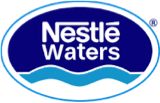 Nestlé admits using prohibited methods for its mineral waters - 29/01/2024
Nestlé admits using prohibited methods for its mineral waters - 29/01/2024
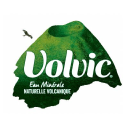 Volvic aims to reduce groundwater withdrawals - 19/10/2023
Volvic aims to reduce groundwater withdrawals - 19/10/2023
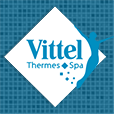 Vittel thermal baths perpetuated by Banque des territoires - 24/05/2023
Vittel thermal baths perpetuated by Banque des territoires - 24/05/2023
